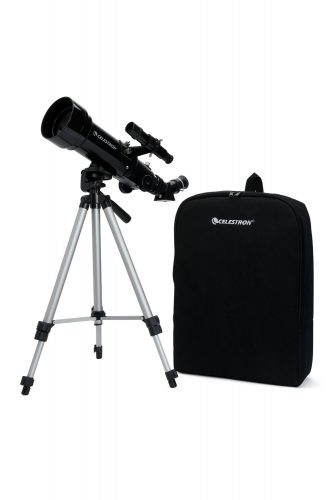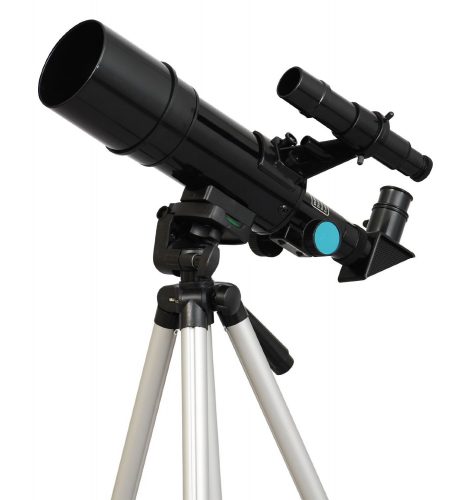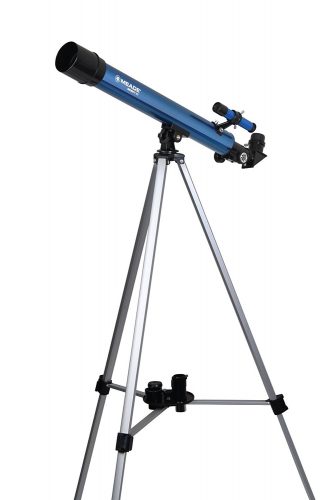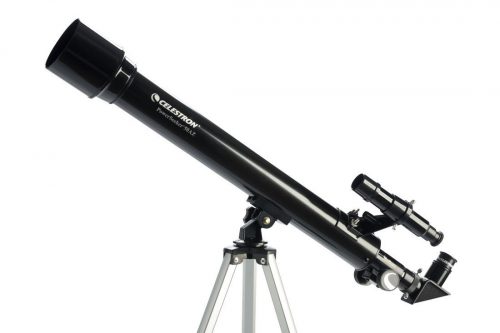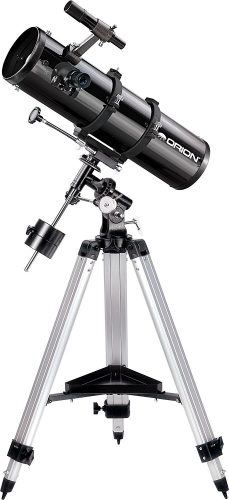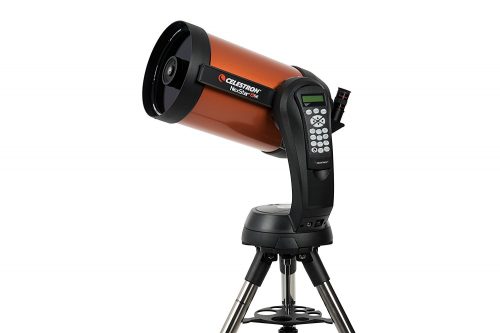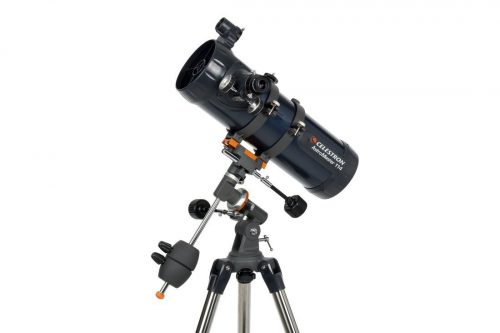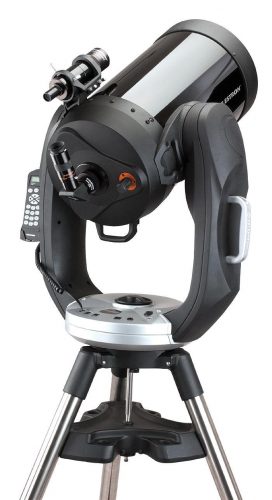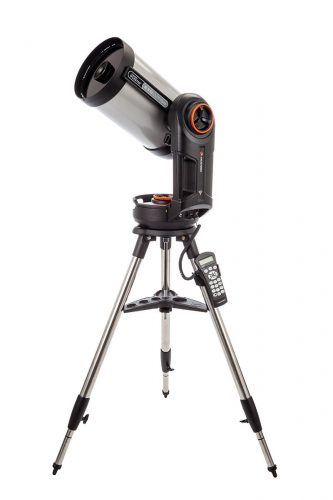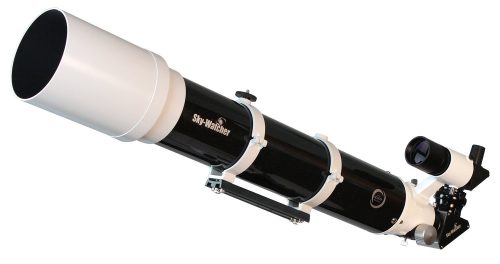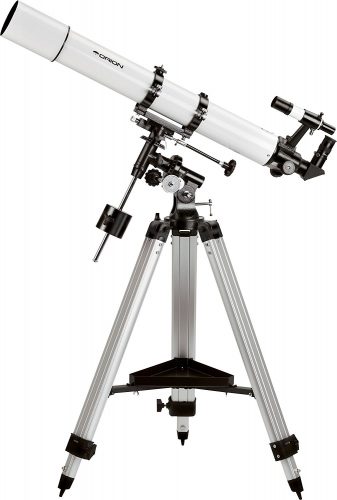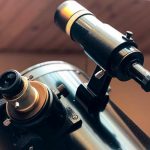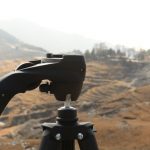Best Telescope Buying Guide with Reviews
A telescope is an excellent thing to have handy. You’ve never seen the night sky until you’ve gotten an up close, personal view that only a telescope can offer you.
If you want to see everything the cosmos has to offer, it’s time to add one of the best telescopes to your shopping list.
If you don’t already have experience working with a telescope, it can be difficult to determine exactly what it is you’re looking for. Consider this your telescope buying guide.
There are different types of telescopes, and a wide range of telescopes for different budgets. Since a telescope can be a serious investment, it’s important to do your research.
You want to buy the right telescope the first time, so comparing the facts is key in making your big decision. You’ll need to hit the drawing board and start making some considerations.
What Kinds of Telescopes Are There?
What is the best telescope? Turns out, it’s not always so simple to answer that question. That’s why it’s important to turn to a telescope buying guide. Before you start shopping, you need to understand the type of telescope you need.
Each telescope has a different purpose, and they aren’t all created equal. These telescope reviews will help you determine which is the most worth your hard earned cash.
Home Telescopes
Home telescopes are smaller versions of the ones used by astronomers. They’re a little more compact, and they’re easier to move around.
These are a little more on the expensive side, but you can’t beat being able to have that experience from the comfort of your own home. The whole family can enjoy the experience of looking at the moon on a cloudless night.
Beginner Telescopes
Beginner telescopes keep things simple. If you’re new to an interest in the universe, a beginner telescope is the best place to start. If you want the best value telescope, look to the beginner models.
You can always upgrade later once you understand how you intend to use your telescope and what features will make things easier for you.
Kids’ Telescopes
Kids’ telescopes are very simple. They don’t do much more than magnify the view of the sky. This is perfect for young learners who don’t need a lot of features.
They’re a great gift idea for parents who are looking to get their children outside and taking an interest in the world around them. If your child develops a serious interest in using the telescope, you can always buy them a better model when they outgrow the kids’ telescope.

Astrophotography Telescopes
Astrophotography telescopes serve two markets – space enthusiasts, and photographers. It’s hard to get a great shot of the moon, constellations, or visible planets with nothing but a regular camera.
Astrophotography telescopes make the impossible possible. This is a piece of equipment that will enhance your intellectual and creative pursuits.
Refractor Telescopes
Refractor telescopes were the original innovation of the viewing scope. The design of these telescopes makes them perfect for getting a clear view of large astral bodies that reflect light.
In layman’s terms, this means they’re ideal for viewing the moon and distant planets. They’re a classic design, modeled by Galileo. Most serious enthusiasts have at least one refractor telescope.
Budget Telescopes
Budget telescopes are perfect for people who just want a neat piece of equipment to take on camping or hiking trips. The casual observer should always have a budget telescope handy.
They’re great to break out once in a while, especially during special events like meteor showers or planets moving into visibility. A budget telescope is worth the money for an occasional peek at the heavens.
Setting a Budget for Your Telescope

How much does a good telescope cost?
Well, it all depends on what would be a good telescope for you. There’s not always a reason to spend tons of money on a telescope, but settling for an inexpensive model when you need the features offered by a premium model won’t get you very far either.
It’s all about what you need.
Inexpensive Telescopes
Inexpensive telescopes are better for children and people who aren’t very serious about using a telescope. They’re also a great way to get started when you don’t know exactly what you want or need out of a telescope.
There’s no sense in purchasing a very expensive telescope if you aren’t sure you’re going to use it regularly. You can always get an inexpensive model and purchase a better one later.
Middle of the Line Telescopes
If you’re looking for the best value telescope, there are tons of models at a middle price point that pack a surprising punch. As technology has gotten better, great telescopes have become less expensive.
They’re easier to manufacture, and the components don’t cost as much as they used to. Most people will find that a middle of the line telescope serves the purpose well.
Expensive Telescopes
Expensive telescopes are a dream for people who are looking to upgrade from a less effective telescope, or for people with a huge passion for stargazing. If you aren’t the type of person to settle for less, or if you’re looking for a gift for a serious enthusiast, you’ll want to spend a few extra dollars on a luxury model.
They’re also great for astronomy or astrophysics students.
How to Determine the Quality of a Telescope
There are a lot of complicated terms that go into describing the specifications of a telescope. If you’ve never bought a telescope before, these terms may seem a little intimidating.
In order to determine whether or not you’re looking at a good telescope, you need to have an idea of what these terms mean and how they affect the way you’ll use your telescope.
These are terms that will come into play when you’re reading telescope reviews. Before you start browsing, you need to know what all of these features are, and how they affect the way you’ll use your telescope.
Some telescope jargon can get a little complicated, but there are three main features that make a telescope work. Different telescopes utilize different types of these features, and this is what sets a bad telescope apart from a good telescope.
The Mount
Telescopes come set on different kinds of mounts. These mounts are a lot like tripods people use for photography cameras. Every mount goes up and down, but some also go side to side.
Side to side mounts allow you to view more without having to move the whole telescope over. This is a great convenience, and many people prefer mounts with a full range of motion.
Some telescopes come with motorized mounts that are automatically adjusted with digital controls. These are a little more expensive and a little more complicated to use, but they’re great for hobby astronomers who want to track objects as they move across the sky.
These mounts come with remote controls, and some of them can even be remotely operated through a smartphone app. While you’ll spend a pretty penny for these features, they’re worth it for dedicated amateur astronomers.
You won’t have to spend time navigating maps and trying to find things manually. The telescope can figure out where you’re at and take you right to the star or planet you’re looking for.
The Aperture
The aperture is by far the most important feature of your telescope. That’s what’s going to allow you to do all of your viewing. What you want to look for in an aperture is the diameter, which is almost always listed in millimeters.
The bigger the aperture, the more visible celestial objects will be. Large apertures can allow you to see distant galaxies when they’re affixed to the right kind of telescopes. 80 millimeter or even 90 millimeter apertures offer an astounding view.
Larger telescopes designed for home use can go over 100 millimeters, and there’s no topping the view you’re going to get from one of those.

The Magnification
Magnification is a tricky feature, and it’s often very misleading. You might think that a telescope that magnifies something 700 times would be great, but at a certain point, that magnification actually becomes useless.
Magnification only works up to a certain power. Any magnification that’s more than twice the diameter’s measurement in millimeters is actually useless. The image would be distorted.
Don’t be fooled by these companies that boast huge magnification numbers. At the end of the day, they don’t really mean much and they aren’t an effective measure of quality.
Thankfully, it’s easy to check the math and make sure you aren’t being duped. You shouldn’t be paying more for a feature that does nothing. If the telescope is already at a reasonable price, you can simply overlook these far-fetched claims.
An Overview of the Best Telescopes
Since there are so many categories of telescopes, this covers a few of the best from each category. By using the guide to the types of telescopes, you’ll be able to decide which ones are the best telescopes for you. All of these fit the criteria for quality, and they’re top rated telescopes.
These are great for all budgets and lifestyles. Whether you’re looking for a gift for your child or you’re looking to live your lifelong passion of chasing the stars, you’ll be able to find a telescope that will allow you to do everything you’ve ever dreamed of.
Best Telescope for Beginners
If you’re just getting started, deluxe travel scopes might be the best way to go. These are the best telescopes for people who are learning, and their portability allows people new to the hobby search for the best vantage points to use to view the sky.
Celestron 21035 70mm Travel Scope
BARSKA Starwatcher 400x70mm Refractor Telescope
This is an entry level refractor telescope that’s every beginner’s dream. It even comes with computer software that helps you learn how to use the telescope and interpret the things that you see.
It’s a tabletop telescope that’s easy to set up on the rail of your porch or in an upstairs windowsill. It’s also easily portable, so you can show your friends how it works.
Best Telescope for Kids
These are the best telescopes to get your little ones interested in the universe. Telescopes are a great educational tool for elementary school aged children who are beginning to learn about the solar system.
You can use these telescopes to take the learning experience out of the classroom and into real life. Who knows – you may even help your children cultivate a lifelong interest in the sky.
Black Twinstar 60mm Compact Kids Refractor Telescope
This is a point and look style telescope, which is exactly what kids need. There aren’t a lot of complicated settings to mess around with, so your kids will figure out the ropes pretty quickly.
The eyepiece is designed for children, but adults can still enjoy a peak or two. There are two included eyepieces that can be swapped out for either 15x or 50 x magnification. Probably the best telescope for kids.
Meade Instruments Infinity 50mm AZ Refractor Telescope
This telescope is as easy as can be, and it comes at an affordable price. It’s so lightweight and easy to set up that your children won’t even need your help getting things ready. It features a multidirectional mount and three swappable eyepieces that feature different levels of magnification.
Kids don’t need complicated features – they need a telescope just like this one.
Best Telescope for the Money
If you’re a thrifty shopper and you like to know you’re getting the most for your money, here are a few models that help you stretch your dollar a little further.
You can get great quality for a reasonable price, and these telescopes help bring great technology to a tighter budget.
Celestron PowerSeeker 50 AZ Refractor Telescope
This is a budget model that includes all of the features that an enthusiast would need. It has a modest 50 millimeter aperture, but that’s all you need to view things that are relatively close to the earth.
If you’re mostly interested in constellations or getting a better glimpse at the moon, this telescope offers you everything you need at an accessible price point.
Orion 09007 SpaceProbe 130ST Equatorial Reflector Telescope
The price tag on this model might seem a little larger than you were expecting, but when you compare it to similar telescopes, it’s an absolute steal. This is one of the best telescopes you can get for this price, as it’s designed to function just as well as other models that can cost up to twice as much.
You can look right into a nebula with this model, and it’s lightweight enough that you can take it with you on stargazing trips. You can’t beat this price.
Best Telescope for Astrophotography
Astrophotography requires a great telescope. You’ll need to be able to fully adjust the magnification and find the things you want to photograph. This means purchasing a premium telescope.
For serious enthusiasts, there’s nothing better than a telescope that’s optimized to make photography simple.
Celestron NexStar 8 SE Telescope
This is one of the best telescopes in the world. It has digital controls and a fully functional database that allows you to locate and identify the celestial objects you want to photograph.
The magnification dials in perfectly, allowing you to get a sharp focus on the subject you’d like to photograph. You’ll get breathtaking shots of the surface of the moon, and even shots of full constellations. Definitely the best telescope for astrophotography.
Celestron 31042 AstroMaster 114 EQ Reflector Telescope
This is a budget astrophotography telescope with some really great features. You’re getting two eyepieces, and they’re designed to be able to view the moon’s craters, as well as the moons of distant planets.
This is an entry level astrophotography telescope that’s perfect for people who already have a great camera. This telescope will get you halfway there, and the camera can do the rest of the work.
Best Home Telescope
The best home telescope will bring the quality of an observatory telescope right to your back yard. They’re often heavy and difficult to move, but that’s because they’re supercharged
They sometimes weigh over 100 pounds, but if you want to feel like an astrophysicist in your own home, it’s worth hauling the weight out to the lawn.
They tend to be expensive, but you can’t put a price on seeing space up close and in immaculate detail.
Celestron CPC 1100 StarBright XLT GPS Schmidt-Cassegrain 2800mm Telescope
This telescope is completely computerized. It’s all robotically adjusted according to your specific requirements. It uses NexStar and a GPS to help you find things, so you’ll never have to spend hours searching for your subject.
This is especially helpful when you know a particular planet is coming close to naked eye visibility, but you want to get your glimpse sooner.
Celestron NexStar Evolution 8 Schmidt-Cassegrain Telescope
This telescope has WiFi capabilities, and it’s computerized for control through your smartphone. It even comes with a charging port that you can use for your iOS or Android device.
It comes with a rechargeable battery that’s good for up to 10 hours of use. Its astounding 203 millimeter aperture will shock you with its clarity and true to life image.
Best Refractor Telescope
Refractor telescopes are a favorite among the astronomy community. The classic design has never gone out of style, and it’s only gotten better with age. Some of the best telescopes in the world are refractors, and it’s the preferred technology of experts.
If you want to get your hands on the kind of telescopes the first stargazers used, a refractor is exactly what you’re looking for.
Sky-Watcher ProED 120mm Doublet APO Refractor Telescope
This is a 120 millimeter telescope that will give you a spectacular view of anything you choose. You’re going to get a great contrast with this telescope. The sky will be the blackest black, and objects will show true to their actual colors.
It will pick up the smallest details and allow you to see them in a way you’ve never seen them before. This is designed as a grab and go model, so setup is a total breeze.
Orion 9024 AstroView 90mm Equatorial Refractor Telescope
Refractor telescopes tend to be expensive, and this one is surprisingly affordable for everything it offers. You’re getting two eyepieces and a 90 millimeter aperture, which is large enough to get a perfect look at nearly anything.
It’s strong enough to see the rings on Saturn, and the brightly colored bands surrounding Jupiter. The mount is completely manual, making it easy to gradually track slow moving objects for long periods of observation.
What Kind of Telescope Do You Need?
There’s a perfect telescope for every household, and even every traveler. The best telescopes come in all kinds of varieties. No matter who you are or how you intend to use the telescope, the telescope buying guide should make it clear which is the smartest buy.
Use the telescopes reviews to narrow down the features that you like, and go for the one you can see yourself using the most.


